(What should the spectrum of a galaxy look like?)
In 1943, Carl Seyfert published his study of some spiral galaxies with peculiar nuclei, which are bright and unresolved (a point source within the instrument resolving power).
They have emission lines on top of a strong continuum in their spectra!
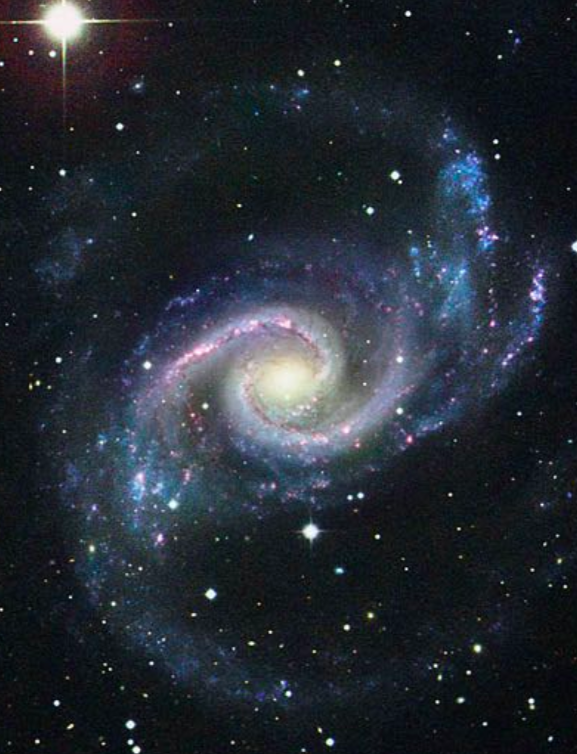
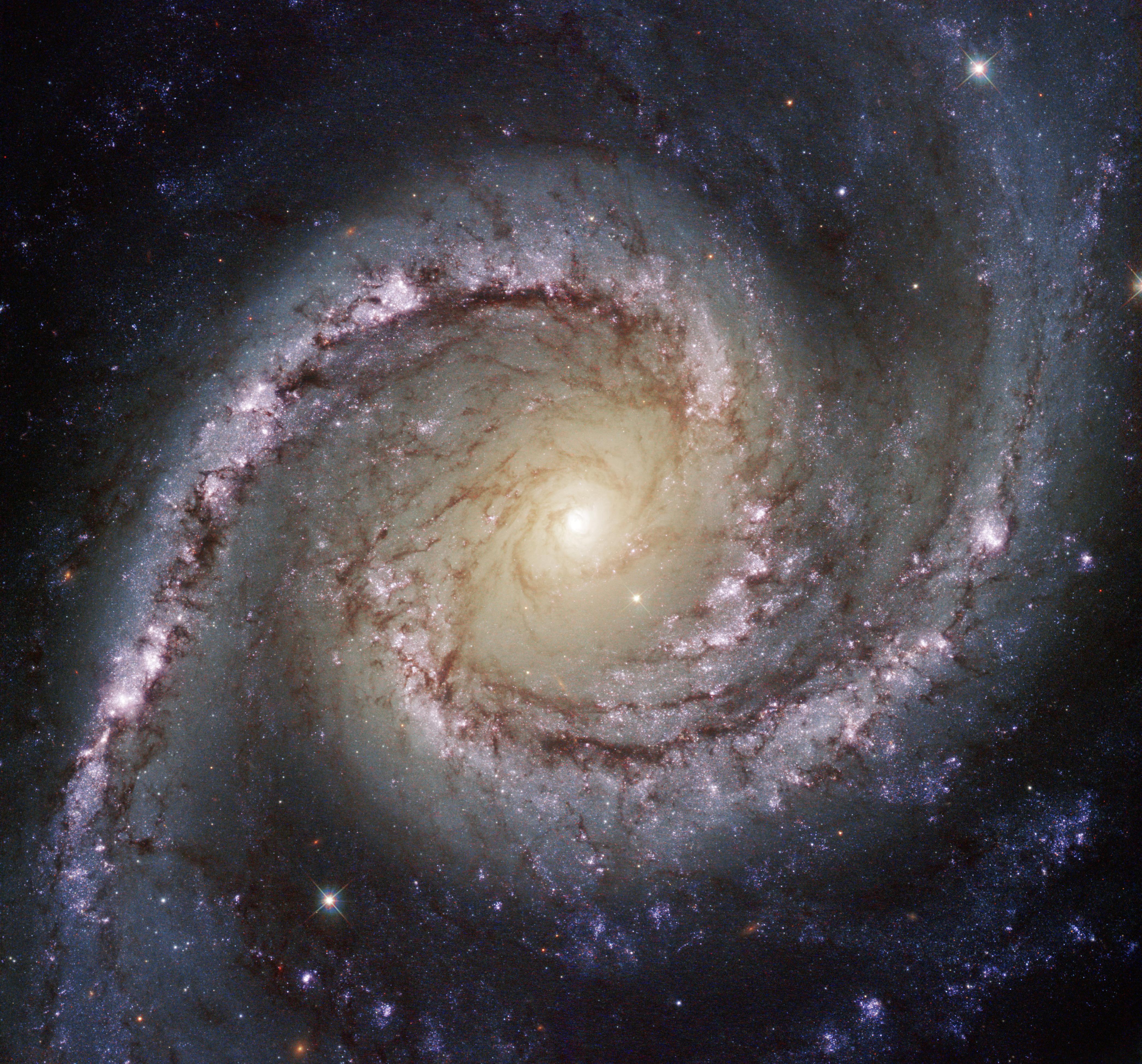
[The Seyfert galaxy NGC 1566]
[The Seyfert galaxy NGC 7742]

[The Seyfert galaxy NGC 7674]
[Seyfert I (Mrk 1243) and Seyfert II (Mrk 1157) spectra]
(What could make a bright, varying, compact core of a Seyfert galaxy?)
The first discrete radio sources other than the Sun are Cygnus A, Cas A and Puppis A.
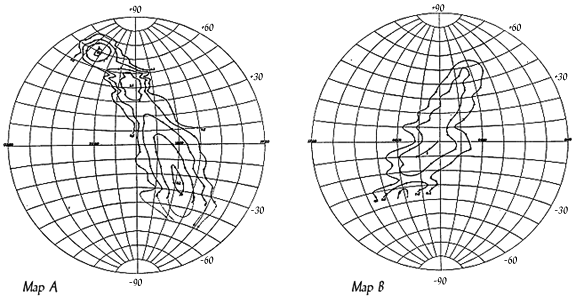
[Radio emission (160 MHz) in the whole sky (plotted in equatorial coordinates), taken from Grote Reber 1944, ApJ 100, 279. The emission is basically along the galactic plane with local maxima in the constellations Cassiopeia, Cygnus and Puppis.]
[A more modern view of Cygnus A in radio and optical. The two radio lobes span about 2 arcminutes. Walter Baade and Rudolph Minkowski found the optical counterpart of Cyg A (1954, ApJ 119, 206). It is a peculiar (with emission lines) elliptical galaxy. Its redshift is 0.056, corresponding to a recession velocity of 16,000 km/sec, a distance of 170h-1 Mpc.]
Double-lobed radio sources
[3C 388]
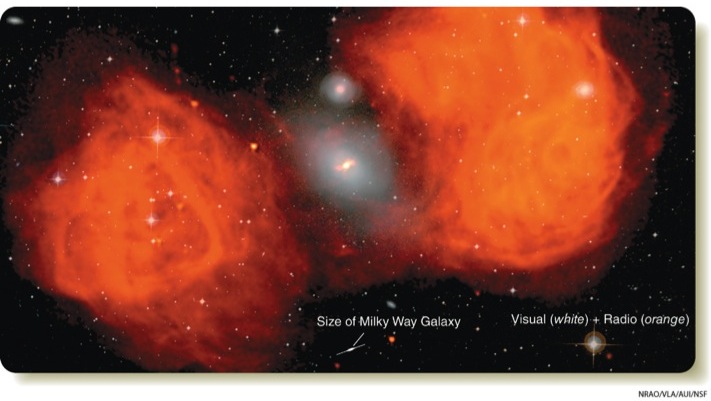
[NGC 1316 (Fornax A)]
One-sided jets
[The M87 radio image]
[Centaurus A]
Typical sizes are 50 kpc ~ 5 Mpc.
The central galaxy is usually a giant elliptical, also with emission lines (NLRGs, BLRGs)
(Seyferts are radio-quiet spirals; radio galaxies are ellipticals; more and more exceptions are found.)
1. Hot spots
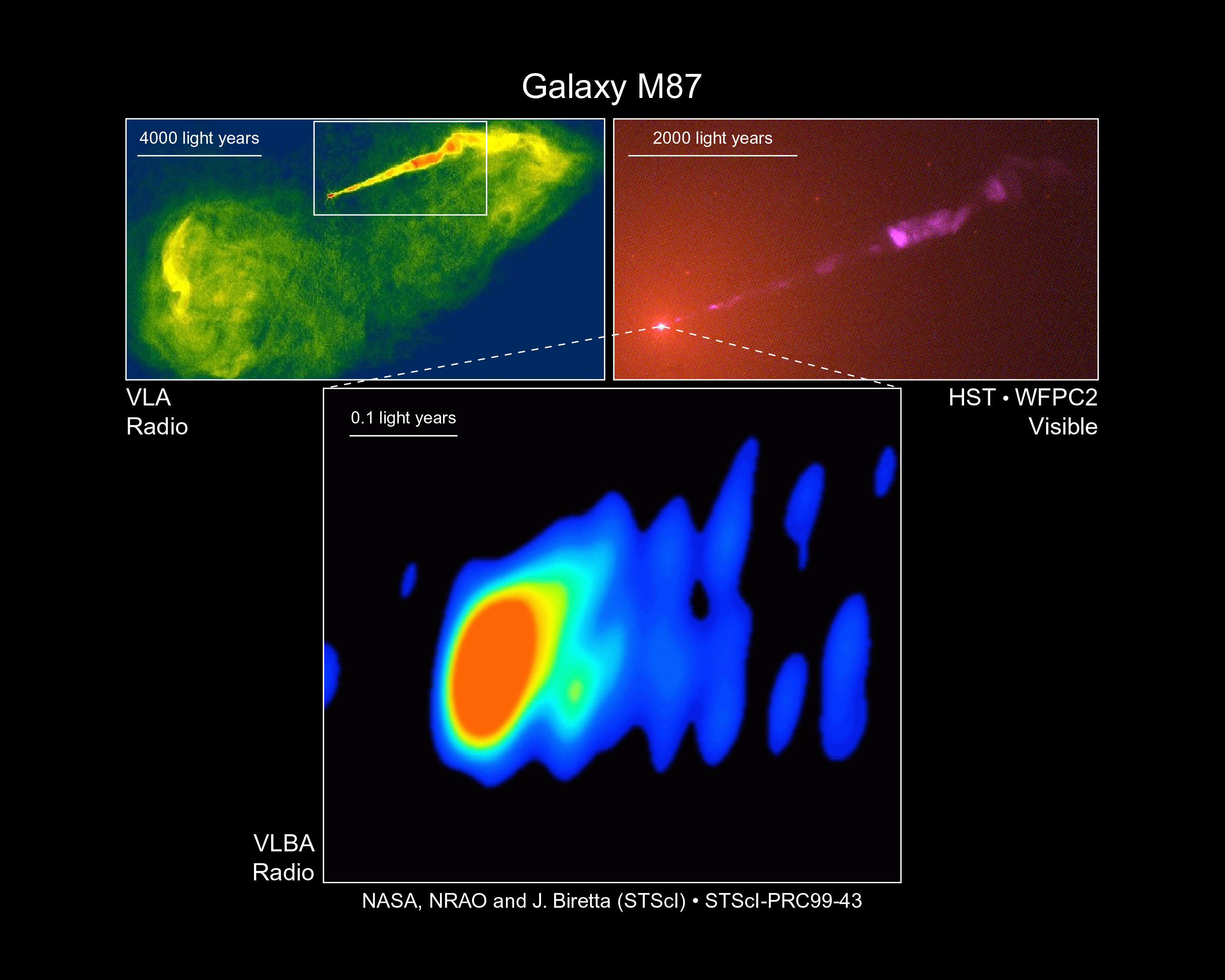
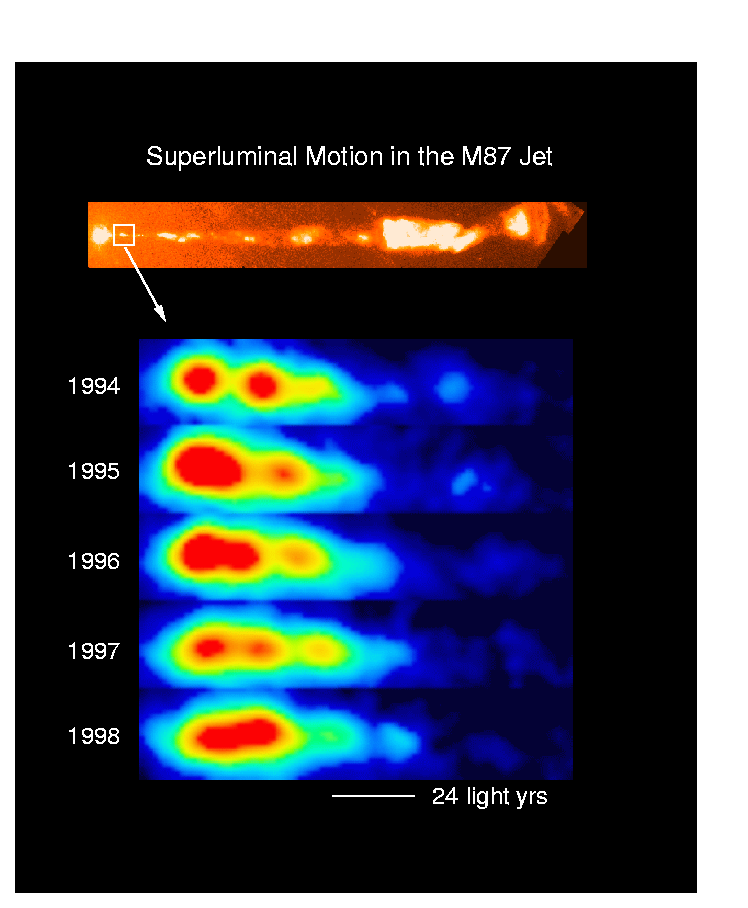
[An inner section of the M87 jet]
2. Superluminal motion (a movie of the M87 jet; see the next section for the cause of being superluminal.)
3. Power-law spectra (nonthermal, very probably from synchrotron radition)
4. The formation (ejection and collimation) of jets is still poorly understood.
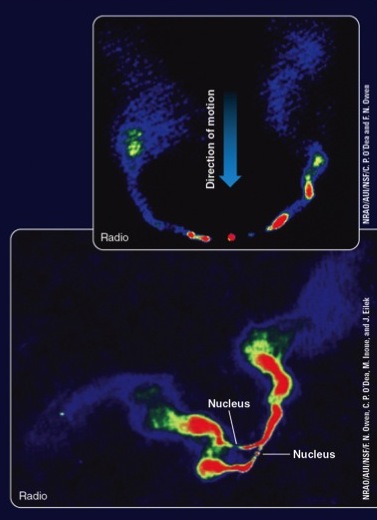
[NGC 1265 and 3C 75]